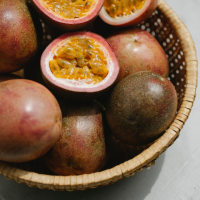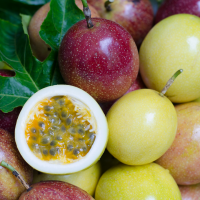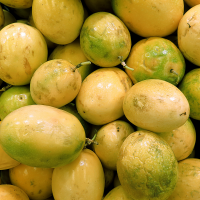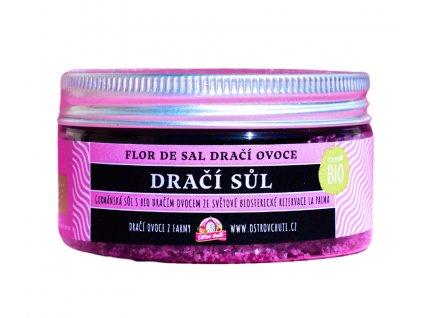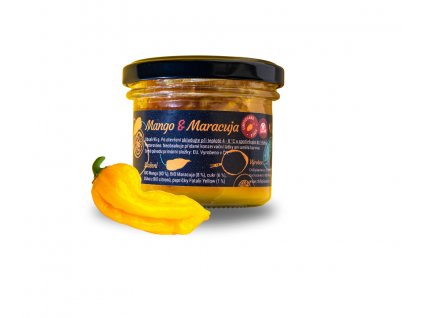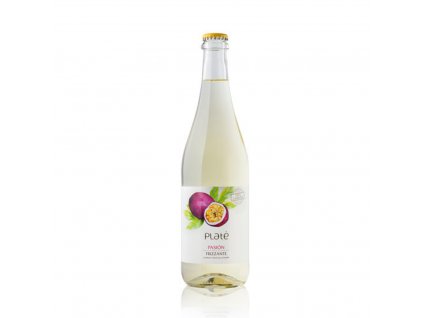Passion fruit
Passion fruit is a tropical vine belonging to the Passifloraceae family. The plant has delicate flowers with distinctive, beautifully shaped flower fruits. The fruits are usually round or oval, with a smooth or leathery skin and flesh full of tiny, gelatinous seeds.
How does passion fruit taste?
Passion fruit has a very characteristic and intense taste, which depends very much on the variety and the place of cultivation. On our farm, we grow two varieties, Rubi with red skin, which is sweeter with a slightly sour touch, and the variety "amarilla" with yellow skin and very sour flesh.
Where does it grow and how to eat it?
Passion fruit is grown mainly in tropical and subtropical regions around the world. Its original homeland is South America, specifically the Amazon region, but today it is also grown in other parts of the world, including our island of La Palma, where we grow it organically on our Ostrovchuti farm.
Cut the fruit in half and use a spoon to scrape out the pulp along with the tiny seeds. The seeds are edible and have a specific taste that contributes to the characteristic aroma of passionfruit.
Don't throw away the peel, try boiling it with mint or lemon balm and make a nice bedtime tea.
Points of interest:
Passion fruit flowers have a unique appearance that is often associated with biblical symbolism, which has led to it being sometimes referred to as the "passion flower".
Some species of passion fruit are only pollinated by certain species of bees, which makes it an interesting ecological phenomenon.
Benefits and medicinal effects of passion fruit:
Rich in vitamins and minerals: Passion fruit is rich in vitamins A and C, as well as iron, calcium and potassium.
Support of the immune system: Thanks to the high content of antioxidants, passion fruit helps to strengthen the immune system and protect the body from free radicals.
Improves digestion: Passion fruit seeds contain fiber that supports healthy digestion and regulates blood sugar levels.
Improving sleep: Passion fruit has a very beneficial effect on the nervous system. Therefore, it is recommended to consume it regularly before going to bed.
Storage:
Leave the passion fruit at room temperature. The skin will gradually begin to shrink, which is completely normal, and it is said that the uglier the better. You can then store it in the refrigerator, where it will last up to several weeks.
Recipes:
Passion fruit smoothie:
Mix the pulp and seeds of passion fruit with yogurt, banana and a little honey.
Add ice and blend until smooth.
Serve immediately for a refreshing drink full of vitamins and minerals.
Passion fruit cheesecake:
Add the passionfruit pulp to the cheesecake mixture and serve with fresh fruit slices for garnish
Passion fruit is not only a delicious tropical delicacy, but also offers many health benefits. You can enjoy it raw or add it to various foods and drinks for a refreshing and exotic taste!
You can also use passion fruit to make juice. To obtain the juice, mash the fruits and use a sieve or cheesecloth to separate the juice from the seeds and pulp. This juice can be used alone or as part of drinks, cocktails, sauces and desserts.
Be the first who will post an article to this item!
Be the first who will post an article to this item!









